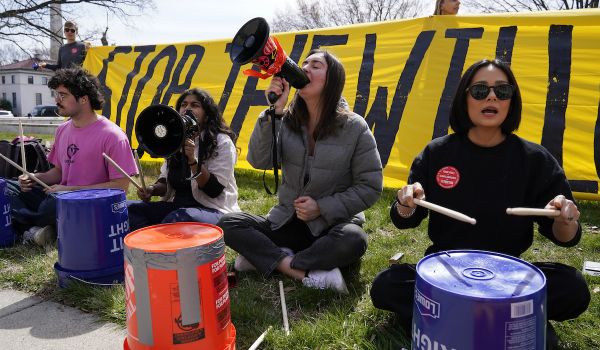Metro ridership in Washington, D.C., hit its lowest level in more than a decade, according to recent data released by the Washington Metropolitan Area Transit Authority (WMATA).
The significant drop in ridership comes during Safetrack, WMATA’s ambitious maintenance blitz that consolidates three years of repairs into 10 months. Safetrack took effect following a directive from the Federal Transit Authority that required WMATA to improve safety throughout the entire rail system. The need for an overhaul was underscored by a series of Metro safety mishaps, including a derailment, earlier this year.
But the long-term goals of Safetrack have resulted in short-term frustration for commuters: delays (due to single tracking), no late-night service and sporadic trains. Shortly after Safetrack began, local public radio station WAMU produced a podcast series called “Metropocalypse,” which explores the daily challenges for Metro commuters. On social media, outrage over service interruptions abound.
Are you kidding me… #wmata #dcmetro https://t.co/hzrBHaZDHX
— Billy Andrews (@billyandrews) September 15, 2016
#DCmetro SUCKS! Would really love to stop WAITING at stations and go to my hotel!! Should have used #uber!
— Melody McBeth (@MelMcBeth) September 11, 2016
@wmata thanks for the wait this morning…again. #grossmismanagement #purplevests #dcmetro #notsosmarttrack
— Steve Crawford (@SteveACrawford1) September 7, 2016
The rancor over Safetrack appears between the lines of WMATA’s data. Since 2015, average weekday boardings dropped by 10 percent, from about 713,000 to 639,000. During an end-of-fiscal-year update in September, WMATA noted this drop in ridership but failed to fully illustrate its scope. Average weekday ridership hit its lowest level since 2002, when the Metro system had seven fewer stations and the city’s population was 15 percent lower than today.
While Metro ridership has steadily declined since its 2008 peak of 750,000 average weekday boardings, no year-to-year drop in ridership matched this year’s plunge. The eight-year decline, however, reflects an overall troubling trend. Monthly WMATA board meetings are filled with handwringing over the agency’s dim financial outlook, and board members spar over raising fares, taxes or both.
But WMATA General Manager Paul Wiedefeld remains optimistic.“I’m confident ridership will come back up,” he said in a press briefing following a WMATA board meeting on Sept. 22. “Our goal is to be reliable … which means making sure trains are coming on time [and] reducing breakdowns.”
Wiedefeld is also banking on external factors to help draw commuters back to Metro.
“Let gas go back up to $5 a gallon and we’ll see what happens,” he said.
Joseph Kane, senior research analyst at Brookings Institution’s Metropolitan Policy Program, believes this is an outdated understanding of public transit. “Leadership needs to ask: How will Metro meet the 21st-century needs of customers?” he says.
As the urban transportation economy rapidly evolves, transit options continue to grow. Unlike 20 years ago, people can get from Point A to B in a variety of ways — largely as a result of flourishing on-demand ride services.
“The solutions [for Metro] are not going to come from the top down,” Kane says. “They’re going to come from the bottom up.”
For commuters, Metro needs to be competitive with the likes of Uber and Capital Bikeshare, which means anticipating expectations of flexibility, affordability and convenience. Kane believes improvements to the current Metro system — not an overhaul of the system — can satisfy these demands.
“There isn’t going to be one silver bullet solution here,” he says, “[but] the number one issue is the quality and convenience of the Metro.” That means balancing the demand for expanded stations in areas like Northern Virginia and the need for maintenance investment.
Gabe Klein, a former DOT director in D.C. and Chicago, agrees that officials have to consider the 21st-century needs of commuters, but suggests a more radical solution.
“We’ve got to think much bigger than maintenance surges,” he says. “We have to think about concessioning the Metro out to the private sector.” (Klein is also the co-founder of the recently launched CityFi, a firm that advises cities on technology and public-private partnerships.)
Klein cites successful international examples of mass transportation systems that incorporate private ownership, such as Barcelona and Tokyo.
“There’s a lot of systematic dysfunction [with Metro],” according to Klein, “and the customer is often lost in the shuffle.”
He points to three central flaws of Metro: politicians populating the board, which creates “parochial” leadership; not having dedicated funding, which causes administrators to chase dollars instead of addressing core customer needs; and decentralized municipal authority, with D.C., Virginia and Maryland sharing oversight of Metro operations.
“[International] mass transit companies [are] becoming like travel agencies,” he says, offering seamless transfers among transit modes, utilizing convenient payment technology, and connecting travelers with useful services along the way. Where these international systems are focused on mass transit at the macro level, Klein argues, “Metro is focused on driving the individual bus.”
Major changes to Metro, however, likely won’t take place until the dust from Safetrack completely settles — though that may take a while.
“When Safetrack officially ends in April, it won’t be the end,” said Chairman Jack Evans at Thursday’s board meeting, paraphrasing Winston Churchill. “If we’re lucky, it may be the end of the beginning.”
In the meantime, D.C. commuters will be exploring their options.
Scott Rodd is a D.C.-based freelance reporter whose work has appeared in the Washington Post, the New York Observer, Think Progress and Salon, among other publications.


_600_350_80_s_c1.jpg)













